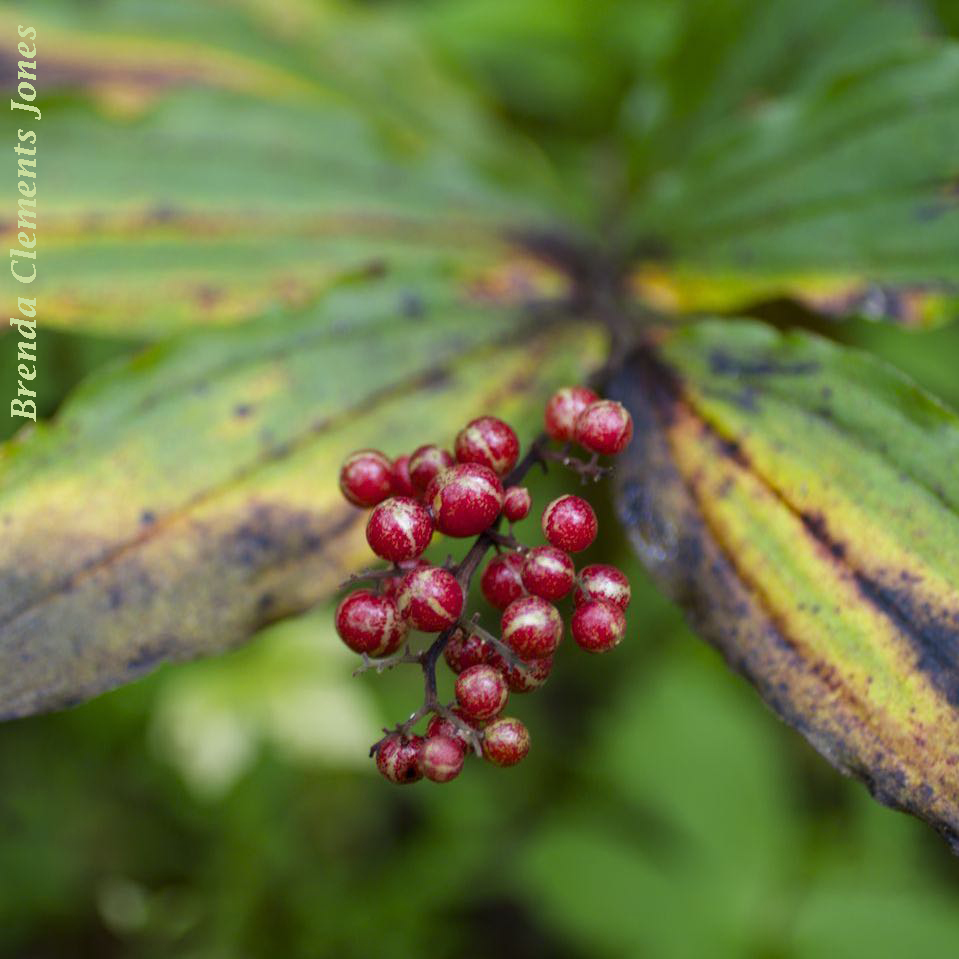
Solomon’s Plume (Maianthemum racemosum), an herbaceous perennial in the lily family (Liliaceae). The berries are a brilliant crimson right now at the end of October, and easy to spot along trails in the mountains. Just as easy to spot, in the spring, are the flowers which bloom for about 3 weeks, late April into May.

Solomon’s Plume is native across most of North America north of Mexico in elevations of up to 9,000 feet. It is a plant that prefers partial shade, and deep, moist, soft soil. But it can be found in dry, rocky soils much like where it is growing when I see it in the woods on my mountain.

In the autumn the leaves of Solomon’s Plume die back, disappearing until the spring when the plants sprout up again from rhizomes and secondary fibrous roots. Those sprouts become arching, slightly zigzag stems with alternate ovate leaves.

The tiny flowers that appear on the end of those arching stems are pollinated by beetles, flies and bees. The berries which replace the flowers during the summer each contain a few seeds, are round, and 1/4″ across.

This is what the berries look like mid-July. Gradually they’ll become the bright crimson berries that are on the plants now in October, waiting for birds such as Ruffed Grouse and Veery to dine on them. Helping distribute the seeds, spreading the plants further through the woods.
